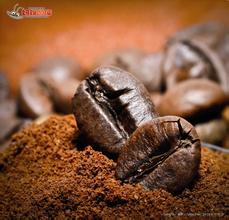Coffee cooked beans Costa Rica Tara beads how to drink flavor and taste of varieties
Costa Rican coffee
Coffee trees are native to the highlands of southwestern Ethiopia in Africa. It is said that more than a thousand years ago, a shepherd found that the sheep had eaten a kind of plant, became very excited and lively, and then discovered coffee. It is also said that a coffee forest was accidentally destroyed by a wildfire, and the smell of barbecue coffee attracted the attention of surrounding residents.
Local aborigines often grind the fruit of the coffee tree and knead it with animal fat to make many ball-shaped balls. These indigenous tribes use these coffee balls as precious food for soldiers who are about to go out to battle. It was not until around the 11th century that people began to use boiled coffee as a drink. In the 13th century, Ethiopian troops invaded Yemen and brought coffee to the Arab world. Because the Islamic doctrine forbids people to drink alcohol, some religious people think that this kind of drink stimulates the nerves and violates the doctrine. Coffee shops were banned and closed for a time, but the Egyptian sultan thought that coffee was not against the doctrine, so the ban was lifted. Coffee drinks quickly became popular in the Arab region. The word coffee Coffee, which comes from the Arabic Qahwa, which means "plant drink", later spread to Turkey and became the source of the word in European languages. The method of growing and making coffee has been constantly improved and perfected by the Arabs.
The coffee produced in Costa Rica is light and sweet in flavor and pleasant in flavor. The excellent Costa Rican coffee is called SHB. The coffee beans here have been carefully processed, and that is why there is high-quality coffee. Costa Rican coffee is full of Arabica beans, washed with water, its style is bright, fragrant, clear as wind chimes swaying in the breeze, mild acidity and sweetness. Because of the sweetness, even if the coffee gets cold, it tastes very good, which is a major feature of Costa Rican coffee.
Product name: Tarazhu Costa Rica Tarrazu SHB, Costa Rica
Country: Costa Rica
Producing area: Tarazhu Tarrazu
Manor: jaguar Manor El Puma Estate
Grade: SHB/EP
Treatment: washing and fermentation, drying in the back section.
Baking degree: medium baking
Finally, let's talk about personal taste. Using utensils: Philharmonic pressure, 20 seconds pressure filtration, 88 degrees water temperature, medium to medium fineness grinding, water powder ratio 12:1, this Philharmonic pressure product surprised me, no less than the successful siphon pot. The dry fragrance and wet fragrance are quite strong, and the dry fragrance of the powder is comparable to that of Yega Snow, to a sweet fragrance that makes people secrete saliva. It smells like chocolate. Rich aroma, mild taste, clean, can not taste astringent taste. The first mouthful was actively sour, but after a while the second bite felt very balanced and thick. After that, you will feel that the bright sour taste is blocked by glycol. After that, Huigan was also quickly and obviously, but it lasted not long. This cup is not bitter or astringent, the acidity is good, clean and mild Costa Rica, people who do not drink a single drink may like it.

Important Notice :
前街咖啡 FrontStreet Coffee has moved to new addredd:
FrontStreet Coffee Address: 315,Donghua East Road,GuangZhou
Tel:020 38364473
- Prev

Introduction to Grinding degree of Ethiopia Yega Xuefei Water washing G2G1 Solar Flavor characteristic treatment method
According to the grinding characteristics of the Ethiopian coffee flavor treatment method, Yega Xuefei uses the oldest sun treatment method, but in 1972, Ethiopia introduced Central and South American washing technology in order to improve its quality. it makes the jasmine and citrus fragrance of Yega Xuefei clearer and more refined, and it has become the best product of the world's fine beans, thanks to the exquisite washing technology since the 1970s.
- Next

Introduction to Colombian-Guatemalan flavor description of coffee beans with outstanding citrus flavor
Introduction to the flavor of different kinds of coffee: Brazilian (South American) Santos coffee: mellow, neutral, can be directly boiled, or mixed with other kinds of coffee beans into a comprehensive coffee, is also a good choice. Second, Columbia (South America) Manning: the palate is rich and solid, with a pleasant sour taste. The smell is mellow, the acidity is moderate, and the sweetness is rich and intriguing.
Related
- Detailed explanation of Jadeite planting Land in Panamanian Jadeite Manor introduction to the grading system of Jadeite competitive bidding, Red bid, Green bid and Rose Summer
- Story of Coffee planting in Brenka region of Costa Rica Stonehenge Manor anaerobic heavy honey treatment of flavor mouth
- What's on the barrel of Blue Mountain Coffee beans?
- Can American coffee also pull flowers? How to use hot American style to pull out a good-looking pattern?
- Can you make a cold extract with coffee beans? What is the right proportion for cold-extracted coffee formula?
- Indonesian PWN Gold Mandrine Coffee Origin Features Flavor How to Chong? Mandolin coffee is American.
- A brief introduction to the flavor characteristics of Brazilian yellow bourbon coffee beans
- What is the effect of different water quality on the flavor of cold-extracted coffee? What kind of water is best for brewing coffee?
- Why do you think of Rose Summer whenever you mention Panamanian coffee?
- Introduction to the characteristics of authentic blue mountain coffee bean producing areas? What is the CIB Coffee Authority in Jamaica?

